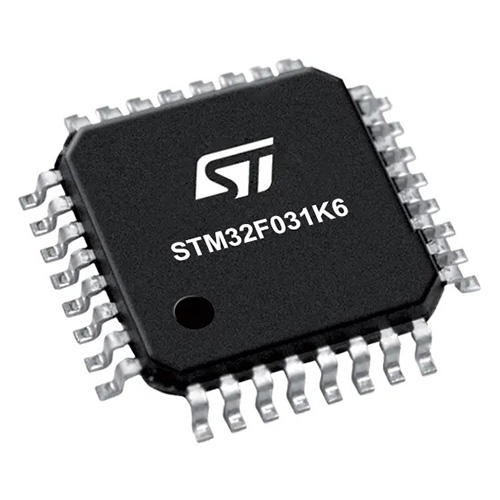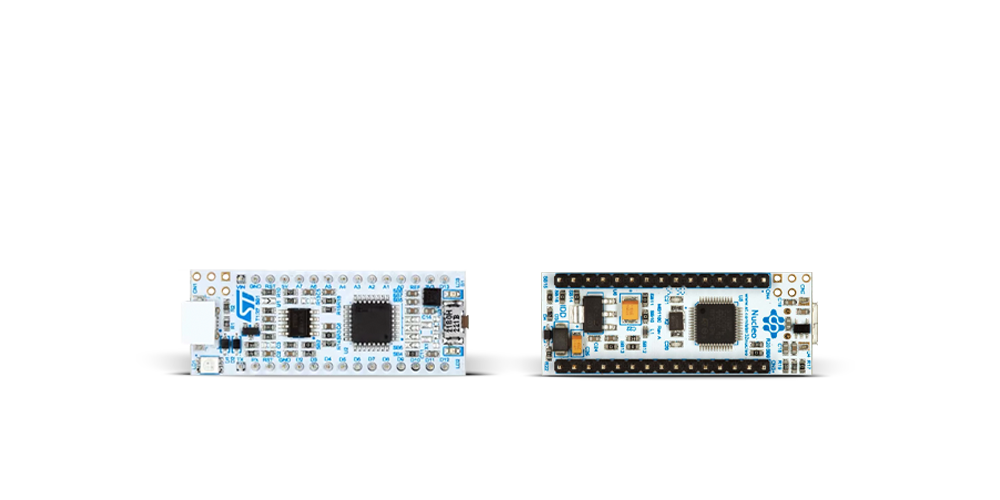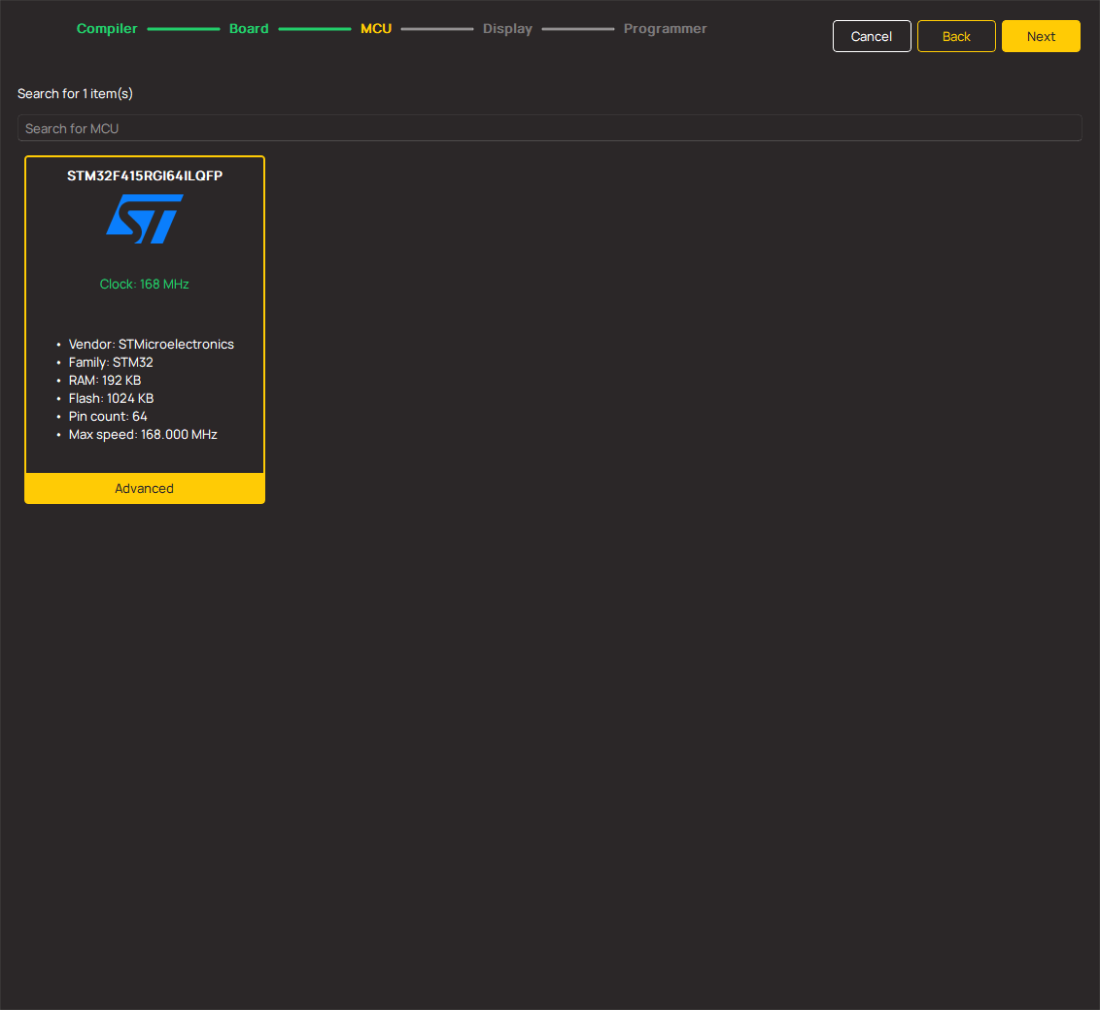Ideal for automotive and secure access systems where reliable long-distance RF communication is required.
A
A
Hardware Overview
How does it work?
MICRF RX 2 Click is based on the MICRF219A, an ASK/OOK receiver with Auto-Poll and RSSI from Microchip. This super-heterodyne, image-reject RF receiver is engineered to require only a crystal, in this case, an onboard 13.52313MHz, and a minimal set of external components for operation. As mentioned, the MICRF219A can be programmed into an Auto-polling mode via register configuration. In this mode, it monitors if there is a valid incoming RF signal while holding data output (DO pin) in a LOW logic state. In this mode, the MICRF219A also goes between the sleep and polling states. Its suitability spans across various applications, such as low-power Remote Keyless Entry (RKE), Tire Pressure Monitoring Systems (TPMS), and remote actuation systems. In terms of performance, the MICRF219A distinguishes itself with a sensitivity of
-110dBm at 1kbps and a 0.1% Bit Error Rate (BER), complemented by four selectable demodulator filter bandwidths ranging from 1625Hz to 13kHz. Filter bandwidth can be selected by placing BW SEL jumpers in a corresponding position, 0 or 1, choosing the corresponding frequency based on the truth table from the attached MICRF219A datasheet (Table 1.). This feature permits the device to accommodate bit rates as high as 20kbps (from 2.5kbps up to 20kbps). Operating on a 3.3V supply from the mikroBUS™ power rail, it is optimized for 433MHz operation, drawing a typical supply current of 6mA. The MICRF219A also has a low-power shutdown mode controllable through the SH pin, reducing the supply current to an impressive 0.1µA, alongside an RSI pin to indicate received signal strength.
Besides these pins, it also uses the mentioned DO pin as its demodulated data output pin and the CLK pin as the programmed clock input pin for programming the device in combination with the DO pin. For antenna configurations, the board allows for the use of an onboard PCB antenna specifically tuned to 433MHz or an external antenna like Rubber Angle 433MHz Antenna via an SMA connector. Selection is made possible by adjusting the capacitor C4 from position A to B near the SMA connector. This Click board™ can be operated only with a 3.3V logic voltage level. The board must perform appropriate logic voltage level conversion before using MCUs with different logic levels. Also, it comes equipped with a library containing functions and an example code that can be used as a reference for further development.
Features overview
Development board
Nucleo 32 with STM32F031K6 MCU board provides an affordable and flexible platform for experimenting with STM32 microcontrollers in 32-pin packages. Featuring Arduino™ Nano connectivity, it allows easy expansion with specialized shields, while being mbed-enabled for seamless integration with online resources. The
board includes an on-board ST-LINK/V2-1 debugger/programmer, supporting USB reenumeration with three interfaces: Virtual Com port, mass storage, and debug port. It offers a flexible power supply through either USB VBUS or an external source. Additionally, it includes three LEDs (LD1 for USB communication, LD2 for power,
and LD3 as a user LED) and a reset push button. The STM32 Nucleo-32 board is supported by various Integrated Development Environments (IDEs) such as IAR™, Keil®, and GCC-based IDEs like AC6 SW4STM32, making it a versatile tool for developers.
Microcontroller Overview
MCU Card / MCU

Architecture
ARM Cortex-M0
MCU Memory (KB)
32
Silicon Vendor
STMicroelectronics
Pin count
32
RAM (Bytes)
4096
You complete me!
Accessories
Click Shield for Nucleo-32 is the perfect way to expand your development board's functionalities with STM32 Nucleo-32 pinout. The Click Shield for Nucleo-32 provides two mikroBUS™ sockets to add any functionality from our ever-growing range of Click boards™. We are fully stocked with everything, from sensors and WiFi transceivers to motor control and audio amplifiers. The Click Shield for Nucleo-32 is compatible with the STM32 Nucleo-32 board, providing an affordable and flexible way for users to try out new ideas and quickly create prototypes with any STM32 microcontrollers, choosing from the various combinations of performance, power consumption, and features. The STM32 Nucleo-32 boards do not require any separate probe as they integrate the ST-LINK/V2-1 debugger/programmer and come with the STM32 comprehensive software HAL library and various packaged software examples. This development platform provides users with an effortless and common way to combine the STM32 Nucleo-32 footprint compatible board with their favorite Click boards™ in their upcoming projects.
Right angle 433MHz rubber antenna boasts a frequency range of 433MHz, ensuring optimal performance within this spectrum. With a 50Ohm impedance, it facilitates efficient signal transmission. The antenna's vertical polarization enhances signal reception in a specific orientation. Featuring a 1.5dB gain, it can improve signal strength to some extent. The antenna can handle a maximum input power of 50W, making it suitable for various applications. Its compact 50mm length minimizes spatial requirements. Equipped with an SMA male connector, it easily interfaces with compatible devices. This antenna is an adaptable solution for wireless communication needs, particularly when vertical polarization is crucial.
Used MCU Pins
mikroBUS™ mapper
Take a closer look
Click board™ Schematic

Step by step
Project assembly
Track your results in real time
Application Output
1. Application Output - In Debug mode, the 'Application Output' window enables real-time data monitoring, offering direct insight into execution results. Ensure proper data display by configuring the environment correctly using the provided tutorial.

2. UART Terminal - Use the UART Terminal to monitor data transmission via a USB to UART converter, allowing direct communication between the Click board™ and your development system. Configure the baud rate and other serial settings according to your project's requirements to ensure proper functionality. For step-by-step setup instructions, refer to the provided tutorial.

3. Plot Output - The Plot feature offers a powerful way to visualize real-time sensor data, enabling trend analysis, debugging, and comparison of multiple data points. To set it up correctly, follow the provided tutorial, which includes a step-by-step example of using the Plot feature to display Click board™ readings. To use the Plot feature in your code, use the function: plot(*insert_graph_name*, variable_name);. This is a general format, and it is up to the user to replace 'insert_graph_name' with the actual graph name and 'variable_name' with the parameter to be displayed.

Software Support
Library Description
This library contains API for MICRF RX 2 Click driver.
Key functions:
micrfrx2_enable_device- This function enables device by setting the SHD pin to low logic statemicrfrx2_wait_ready- This function waits for all training bytes to arrive which indicates data readymicrfrx2_read_packet- This function reads data packet and stores it in a packet_buf only if the MICRFRX2_PREAMBLE bytes are received successfully
Open Source
Code example
The complete application code and a ready-to-use project are available through the NECTO Studio Package Manager for direct installation in the NECTO Studio. The application code can also be found on the MIKROE GitHub account.
/*!
* @file main.c
* @brief MICRF RX 2 Click Example.
*
* # Description
* This example demonstrates the use of MICRF RX 2 click board by reading and parsing
* packet messages received from the transmitter.
*
* The demo application is composed of two sections :
*
* ## Application Init
* Initializes the driver and enables the device.
*
* ## Application Task
* Waits for a data ready indication, then reads all packet data, verifies the CRC
* bytes in a packet, and displays its data as well as the RSSI value on the USB UART.
*
* @note
* The OOK TX click board is a compatible transmitter for the MICRF RX 2 click.
* Here are a few steps for troubleshooting if you are experiencing issues running
* this example:
* - Check the MCU clock configuration, use an external oscillator instead of the MCU's
* internal one for better accuracy on manchester data rate delay.
* - Measure the actual data rate on the data line and adjust the MICRFRX2_MAN_BIT_LEN_US
* value accordingly.
*
* @author Stefan Filipovic
*
*/
#include "board.h"
#include "log.h"
#include "micrfrx2.h"
#define MICRFRX2_PREAMBLE 0x5AA5 /**< Packet preamble word. */
static micrfrx2_t micrfrx2; /**< MICRF RX 2 Click driver object. */
static log_t logger; /**< Logger object. */
static uint8_t packet_buf[ MICRFRX2_MAX_DATA_LEN + 5 ] = { 0 }; /**< Packet buffer. */
/**
* @brief MICRF RX 2 wait ready function.
* @details This function waits for all training bytes to arrive which indicates data ready.
* @param[in] ctx : Click context object.
* See #micrfrx2_t object definition for detailed explanation.
* @return None.
* @note None.
*/
static void micrfrx2_wait_ready ( micrfrx2_t *ctx );
/**
* @brief MICRF RX 2 read packet function.
* @details This function reads data packet and stores it in a packet_buf only if
* the MICRFRX2_PREAMBLE bytes are received successfully.
* @param[in] ctx : Click context object.
* See #micrfrx2_t object definition for detailed explanation.
* @return Number of data bytes stored in a packet_buf.
* @note The expected packet format is as follows (MSB first, manchester IEEE 802.3):
* TRAINING_BYTES (at least two bytes of 0xAA), PREABMLE, LEN, DATA_IN, CRC16 (calculated
* from whole packet excluding training bytes). Training bytes are excluded from packet_buf.
* This function must be called immediately after calling micrfrx2_wait_ready.
*/
static uint8_t micrfrx2_read_packet ( micrfrx2_t *ctx );
/**
* @brief Reflect bits.
* @details This function reflects a desired number of bits in data.
* @return Reflected data.
* @note None.
*/
static uint16_t micrfrx2_reflect_bits( uint16_t data_in, uint8_t len );
/**
* @brief CRC-16/MAXIM calculation for CRC16 function.
* @details This function calculates CRC16 with parameteres:
* @li @c Width 16 bit
* @li @c Polynomial 0x8005 ( x16 + x15 + x2 + x0 )
* @li @c Initialization 0x0000
* @li @c Reflect input True
* @li @c Reflect output True
* @li @c Final Xor 0xFFFF
* @li @c Example { 69, 00 } - 0xAFD1
* @param[in] data_buf : Array of bytes to calculate crc from.
* @param[in] len : Number of bytes to calculate crc from.
* @return Calculated CRC.
* @note None.
*/
static uint16_t micrfrx2_calculate_crc16 ( uint8_t *data_buf, uint16_t len );
void application_init ( void )
{
log_cfg_t log_cfg; /**< Logger config object. */
micrfrx2_cfg_t micrfrx2_cfg; /**< Click config object. */
/**
* Logger initialization.
* Default baud rate: 115200
* Default log level: LOG_LEVEL_DEBUG
* @note If USB_UART_RX and USB_UART_TX
* are defined as HAL_PIN_NC, you will
* need to define them manually for log to work.
* See @b LOG_MAP_USB_UART macro definition for detailed explanation.
*/
LOG_MAP_USB_UART( log_cfg );
log_init( &logger, &log_cfg );
log_info( &logger, " Application Init " );
// Click initialization.
micrfrx2_cfg_setup( &micrfrx2_cfg );
MICRFRX2_MAP_MIKROBUS( micrfrx2_cfg, MIKROBUS_1 );
if ( DIGITAL_OUT_UNSUPPORTED_PIN == micrfrx2_init( &micrfrx2, &micrfrx2_cfg ) )
{
log_error( &logger, " Communication init." );
for ( ; ; );
}
micrfrx2_enable_device ( &micrfrx2 );
log_info( &logger, " Application Task " );
}
void application_task ( void )
{
static float rssi_v = 0;
static uint8_t packet_len = 0;
static uint8_t msg_cnt = 0;
static uint16_t crc = 0;
log_printf( &logger, "\r\n Waiting for data ready...\r\n" );
micrfrx2_wait_ready ( &micrfrx2 );
packet_len = micrfrx2_read_packet ( &micrfrx2 );
if ( packet_len )
{
micrfrx2_read_rssi_voltage ( &micrfrx2, &rssi_v );
crc = ( ( uint16_t ) packet_buf[ packet_len - 2 ] << 8 ) | packet_buf[ packet_len - 1 ];
if ( crc == micrfrx2_calculate_crc16 ( packet_buf, packet_len - 2 ) )
{
log_printf( &logger, " Received message: " );
for ( msg_cnt = 0; msg_cnt < packet_buf[ 2 ]; msg_cnt++ )
{
log_printf( &logger, "%c", ( uint16_t ) packet_buf[ msg_cnt + 3 ] );
}
log_printf( &logger, "\r\n RSSI: %.1f dBm\r\n", MICRFRX2_RSSI_V_TO_DBM ( rssi_v ) );
}
}
Delay_ms ( 100 );
}
void main ( void )
{
application_init( );
for ( ; ; )
{
application_task( );
}
}
static void micrfrx2_wait_ready ( micrfrx2_t *ctx )
{
uint16_t time_cnt = 0;
uint16_t training_high_cnt = 0;
uint16_t training_low_cnt = 0;
// Loop until at least two 0xAA bytes of training data is detected
for ( ; ; )
{
// Measure time in steps of MICRFRX2_MAN_BIT_LEN_US / 40 for high signal
for ( time_cnt = 0; micrfrx2_get_data_pin ( ctx ); time_cnt++ )
{
Delay_us ( MICRFRX2_MAN_BIT_LEN_US / 40 );
}
if ( time_cnt > 30 )
{
// Increment training_high_cnt if signal width is at least 75% of MICRFRX2_MAN_BIT_LEN_US
training_high_cnt++;
}
else
{
// Reset counters if any invalid signal is detected
training_high_cnt = 0;
training_low_cnt = 0;
}
// Measure time in steps of MICRFRX2_MAN_BIT_LEN_US / 40 for low signal
for ( time_cnt = 0; ( training_high_cnt > 0 ) && !micrfrx2_get_data_pin ( ctx ); time_cnt++ )
{
Delay_us ( MICRFRX2_MAN_BIT_LEN_US / 40 );
}
if ( time_cnt > 30 )
{
// Increment training_low_cnt if signal width is at least 75% of MICRFRX2_MAN_BIT_LEN_US
training_low_cnt++;
}
else if ( ( training_high_cnt >= 8 ) && ( training_high_cnt == ( training_low_cnt + 1 ) ) )
{
// At least two 0xAA bytes are detected ending with shorter low signal, so break the loop here.
// Waiting for 12.5% of MICRFRX2_MAN_BIT_LEN_US as an offset for packet reading.
Delay_us ( MICRFRX2_MAN_BIT_LEN_US / 8 );
break;
}
}
}
static uint8_t micrfrx2_read_packet ( micrfrx2_t *ctx )
{
uint8_t byte_cnt = 0;
uint8_t bit_cnt = 0;
// Loop until all data bytes are received or a bad PREAMBLE word is detected
for ( ; ; )
{
if ( !micrfrx2_get_data_pin ( ctx ) )
{
// Store data in packet_buf in manchester IEEE 802.3 format, MSB first
packet_buf[ byte_cnt ] |= ( 0x80 >> bit_cnt );
}
if ( 8 == ++bit_cnt )
{
// Reset bit counter and increment byte counter if 8 bits are received
bit_cnt = 0;
byte_cnt++;
}
if ( 2 == byte_cnt )
{
// Two bytes are received, check PREAMBLE word
if ( MICRFRX2_PREAMBLE != ( ( ( uint16_t ) packet_buf[ 0 ] << 8 ) | packet_buf[ 1 ] ) )
{
byte_cnt = 0;
break;
}
}
else if ( ( packet_buf[ 2 ] + 5 ) == byte_cnt )
{
// Break the loop if all packet data are received (PREAMBLE + DATA_LEN + DATA + CRC)
break;
}
// Move to the next manchester clock high state by delaying for MICRFRX2_MAN_BIT_LEN_US
Delay_us ( MICRFRX2_MAN_BIT_LEN_US );
}
return byte_cnt;
}
static uint16_t micrfrx2_reflect_bits( uint16_t data_in, uint8_t len )
{
uint16_t data_out = 0;
for ( uint16_t cnt = 0; cnt < len; cnt++ )
{
data_out |= ( ( data_in >> cnt ) & 1 ) << ( len - cnt - 1 );
}
return data_out;
}
static uint16_t micrfrx2_calculate_crc16( uint8_t *data_buf, uint16_t len )
{
uint16_t crc16 = 0x0000;
for ( uint16_t cnt = 0; cnt < len; cnt++ )
{
crc16 ^= ( micrfrx2_reflect_bits( data_buf[ cnt ], 8 ) << 8 );
for ( uint8_t bit_cnt = 0; bit_cnt < 8; bit_cnt++ )
{
if ( crc16 & 0x8000 )
{
crc16 = ( crc16 << 1 ) ^ 0x8005;
}
else
{
crc16 <<= 1;
}
}
}
return micrfrx2_reflect_bits( crc16, 16 ) ^ 0xFFFF;
}
// ------------------------------------------------------------------------ END
Additional Support
Resources
Category:Sub-1 GHz Transceievers




































